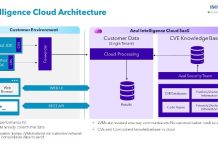
Last year Aprika grew around 80%, according to Johnson , customer base and revenue are both heading in the right direction. Mission Control is used in more than 25 countries worldwide with the biggest usage in North America and ANZ. There are also customers in many European countries. Next year Johnson plans for around 25% growth in employees in H1, with further similar growth in the following 12 months. I asked Johnson if this would be impacted by the current state of the economy.

He replied, “We’re not really seeing a slowdown in inquiry numbers or close rates. Last year we carried out the economic impact study of Mission Control. That’s obviously got some great metrics in there, things like, customers seeing a 45% improvement in operational efficiency, a 32% increase in profitability. In an economic downturn, where they might not necessarily be able to sell more, they’re actually looking to make more of what they’ve already got. Definitely seeing plenty of customers using this as an opportunity to consolidate their existing tech stack and move into something like Mission Control that can then obviously, do what three or four solutions need to be stacked together to be able to do.”
Flexible project costs and billing rate
Mission Control can now set specific rates for specific customers for all or some of their projects. When creating a project, administrators can set the new option of a rate card for the billing rate and the cost rate. Each rate card, when created, links to a specific customer account. When creating a rate card, the user can identify values for the following roles:
- Project Manager
- Consultant
- Designer
- Developer
- Tester
- Trainer
The solution also has greater flexibility than roles. It allows administrators to set a rate based on a specific skill. For example, the system could be set up to have a different rate based on whether a business analyst is doing consulting or documentation. Users can also clone specific rate cards for other customers. Users can also adjust rate cards by date for each rate card. Rates are tied to an individual role or person. When setting up a project, the administrator can opt to use the specific customer rate card. Managing these individual rate cards seems potentially cumbersome. Johnson explained the thinking behind the new feature, saying.
“The reason they would be using rate cards is the need to have specific rates that would apply to a particular customer. This is now one of four options for managing financial rates within Mission Control. So if they needed something a bit more centralised across customers, they would be using one of our other existing options. This came in based on customer feedback where they need to track rates specific to individual customers.”
Project phases enhancement
As promised, Mission Control has also introduced phases. Phases are an optional layer between a project and milestones. While phases appear on the Gantt Chart, it is not possible to edit them within it because most of the data relating to phases is contained within milestones. For larger projects, organisations can create a phase that will apply to multiple milestones. Phases are flexible, and while some phases may be part of a chronological sequence of milestones within a project, they do not have to be. Johnson explained, “The phase will span the duration from milestone One to the end of milestone seven. But milestones four, five, and six could be related to a different phase.”
This opens up some interesting possibilities for how organisations can apply phases. Phases could become a very powerful feature, and it will be interesting to see how customers apply the new feature.
Gantt Chart improvements
There are improvements to the Gantt Chart, with the ability to save and reuse filters now available. The Gantt Chart can also display all holiday records. A holiday is shaded grey on the Gantt Chart, making it easier to see when a specific individual cannot do work. This simple change enables project managers to quickly identify where their project may have issues. Each task will show the impact of any holiday booked by an individual. The screen will need to refresh if a holiday is booked while a project manager is viewing the Gantt Chart. Also, if a task is reassigned, the Gantt Chart will automatically update to show the new holidays for that resource.
Johnson explained this further, saying, “If I’m reassigning something from one person to another, the holidays will automatically appear, and the actions will automatically reschedule visually on the Gantt Chart. The Save still needs to be committed at the end once you are happy with that change. You might decide as a result of seeing that holiday has caused that action to be pushed out, but you might actually need it to happen on that day. So you need to go and find a different resource.”
Users can also update the assignee by editing the field, which will update the Gantt Chart. This relates to an enhancement of the Role Availability where administrators can set each individual’s work days. With a shift to a four-day week, and an increase in part-time workers, this feature gives visibility for resource managers of when people are working within several pages, including:
- Scheduler
- Resource Assignment Wizard
- Resource Planner
- Timesheet
The Gantt Chart also has new hover tips, displaying additional information when configured. The new hover tips that are available include:
- Project Gantt Chart Tooltip Fields
- Phase Gantt Chart Tooltip Fields
- Milestone Gantt Chart Tooltip Fields
- Action Gantt Chart Tooltip Fields
- Checklist Item Gantt Chart Tooltip Fields
Visualisation, Configuration and customisation improvements
There are several configuration options and customisation options available. There is an option that when the end date is recalculated from a change in the start date, it can either adjust based on the number of working days or the number of calendar days. The Log Time Component layout can be modified to include more fields if required. The additional fields are: Date, Project Member, Project, Milestone, Action and Status.
Within Timesheets, it is now possible to collapse and expand rows in timesheets by project. Users can also sort their timesheets by more than just project names, milestones, and action names. The option now includes three sort layers giving more control to users. Users can also create, set, save and reuse filters within timesheets. For example, the feature lets users focus on updating a timesheet for a specific project.
The approval status visibility can now be hidden through a configuration setting. Another useful new configuration setting enables administrators to hide actions without logging time on the timesheet. Johnson explained that approvals for timesheets also see several other improvements: “(it) gives customers more granular information. Checklist items within Mission Control are evolving to become a bigger entity in their own right. Rather than just saying that someone has spent time working on this action, you can now see that time has been spent working on individual checklist items relating to that action.”
The release also sees improvements to the meeting manager, allowing organisations to brand PDFs produced, and improvements to the Agenda functionality.
What is coming in 1.64
I asked Johnson to give a sneak peek of what customers can expect in the next release, 1.64. He replied, “One of the main things we’ve got coming up next is a skills development planning feature. Being able to look at each individual’s resource on the team. You can already track what skills they have got — doing a peer review of their proficiency within those skills and their enjoyment factor of those skills. Putting plans in place to actually develop those skills further. We might consider that I’m currently at a proficiency level of seven in something. What are we going to do to move me up to an eight or a nine? The enjoyment factor of it is going to get factored in as well.
“Overall, you’ll be able to see a historic trend of how each individual person has improved. Alongside that, a skills matrix report will allow you to easily identify which people have a specific skill, how proficient they are at it and how much they enjoy it. Ultimately, try not to overburden individual resources with things they don’t necessarily like, even though they might be good at it.”
Jonson spoke about this skills assessment feature last year, but its scope has widened. Johnson continued, “We’ve got a number of enhancements coming to our resource forecasting feature that we released early last year. Then, primarily, enhancements to various other existing features within the system. There are a number of elements to the skills development planning that are coming. Then we’ve got some additional, fairly big modifications to the time sheet scheduled for the next release and to the resource forecasting functionality.”
Enterprise Times: What does this mean
1.63 is an impressive update. Mission Control manages to continuously roll out significant new features while still enhancing other recent functionality and delivering a wide range of minor enhancements. As a bootstrapped organisation, Aprika may not have the marketing spend and brand awareness that some of its larger rivals do. Still, consistent growth and a laser focus mean it is gathering impressive momentum. The new rate cards are interesting and cater to specific customer demand, demonstrating its R&D aligned with its target market. However, the new phases bring something fairly unique and one that will be interesting to follow. Due out in 1.64, the skills assessment feature is another exciting and well-thought-through option that many customers will look forward to. That hybrid of HR/PSA is often missing from other solutions.

























